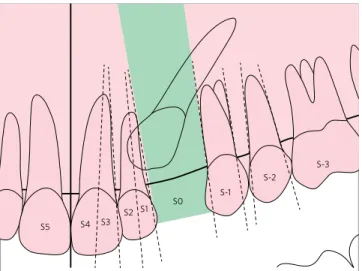Matheus Melo Pithon1
How to cite this article: Pithon MM. Orthodontics highlights. Dental Press J Or-thod. 2012 Nov-Dec;17(6):3-4.
Submitted: October 20, 2012 - Revised and accepted: October 20, 2012
1 MSc and PhD in Orthodontics, UERJ. Diplomate by the Brazilian Board of
Orthodontics and Facial Orthopedics.
Matheus Melo Pithon
E-mail: matheuspithon@gmail.com
SELF-LIGATING BRACKETS DO NOT MAKE THE ORTHODONTIC TREATMENT FASTER
Nowadays, a question remains among orthodon-tists: Would self-ligating brackets be able to increase the efficiency of orthodontic treatment and make it faster? Although it may seem paradoxical to think that the connection of brackets will interfere with the biology of tooth movement, the orthodontic materi-als industries keep this flame lit. While searching for an answer, Chinese researchers compared the treat-ment time, the results achieved and anchorage loss in patients treated with self-ligating and conventional brackets.1 The results showed no difference regarding the time and loss of anchorage in patients treated us-ing brackets with different ligatus-ing systems.
ASTHMA AND ORTHODONTIC TREATMENT, IS THERE A RELATION BETWEEN IT?
Asthma is a common disease in childhood and adolescence. Being an inflammatory disease, it may interfere in the orthodontic movement, since it also occurs through an inflammation mechanism. Trying to elucidate this relationship, Brazilian research-ers from UFRJ and Fiocruz decided to assess the real impact of this disease, performing experimen-tal orthodontic treatments in mice.2 The findings showed that asthma seems to boost the orthodontic movement in them. These data now need to be evalu-ated clinically for further confirmation before being adopted in clinical orthodontics. Despite the initial findings, they emphasize the importance of a multi-disciplinary practice in orthodontic treatment.
MOUTHRINSE WITH ALCOHOL MAY INTER-FERE IN ORTHODONTIC TREATMENT
The use of orthodontic appliances demands from their bearers a special care, since the presence of this device in the oral cavity provides greater accumula-tion of plaque. With all this, the orthodontist must make use of an educational-preventive model proper to each patient in order to control the plaque, through the use of brushes and flosses, and also mouthrinses. However, in such cases remains the doubt on what is the influence of these chemical agents on the me-chanical properties of the orthodontic ligatures. In order to make this clear, American researchers eval-uated in vitro the influence of alcoholic rinses on the strength of orthodontic elastomeric chains.3 The re-sults revealed that the force of the elastics decrease with the use of these substances. Thus, this work confirms an important clinical information: When indicating the use of mouthrinses to patients, the orthodontist should emphasize the preference for those without alcohol in their formulation.
PANORAMIC RADIOGRAPHY STILL SEEMS TO BE A GOOD SOLUTION FOR PREDICTING CA-NINE IMPACTION
We live in the era of Computed Tomography, with all its applications and possibilities. We all know that the scans are, nowadays, the most reliable method to evalu-ate the positioning of the teeth which have not erupted yet. Still, would this be the only method to predict the impaction of unerupted teeth, particularly the canines? While searching for an answer to this question, Indian
Orthodontics Highlights
orthodontics highlights
and Chinese researchers verified whether the impac-tion of canines could be predicted by measurements on panoramic radiographs.4 Results were promising, con-sidering that it is possible, yes, to predict canine impac-tion by studying the panoramic radiograph and their inclination when erupting (Fig 1).
PROPOLIS STIMULATES BONE FORMATION AFTER PALATAL SUTURE EXPANSION
Propolis is a resinous substance, obtained by bees through the harvest of flora resins, and modified by the action of enzymes contained in their saliva. It has antioxidant, anti-inflammatory and antimicrobial properties. The power of this substance was reported also on fracture healing, in the medical literature of 2011. With this knowledge, Turkish researchers aimed to find whether this substance would also be beneficial in the process of bone formation after palatal suture expansion.5 The laboratory results give us positive expectations, given that the systemic use of propolis accelerated bone formation in the expanded suture in mice. Such results are of clinical interest, for reducing the retention time after expansion will decrease the whole treatment time. It is worth to emphasize that these results are preliminary and need to be proven clinically in humans (Fig 2).
Figure 2 -Photomicrographs of the study groups, with hematoxylin and eosin (HE): A) non-expanded group, B) expanded group, C) group with the expansion associated to propolis. Ob = Osteoblasts, Nb = New bone; Cp = Capillary, S = Suture (200X magnification).
1. Machibya FM, Bao X, Zhao L, Hu M. Treatment time, outcome, and anchorage loss comparisons of self-ligating and conventional brackets. Angle Orthod. 2012 Aug 17. [Epub ahead of print].
2. Machado CC, Nojima Mda C, Rodrigues e Silva PM, Mandarim-de-Lacerda CA. Histomorphometric study of the periodontal ligament in the initial period of orthodontic movement in Wistar rats with induced allergic asthma.. Am J Orthod Dentofacial Orthop. 2012 Sep;142(3):333-8.
3. Larrabee TM, Liu SS, Torres-Gorena A, Soto-Rojas A, Eckert GJ, Stewart KT. The effects of varying alcohol concentrations commonly found in mouth rinses on the force decay of elastomeric chain. Angle Orthod. 2012 Sep;82(5):894-9. 4. Sajnani AK, King NM. Early prediction of maxillary canine impaction from panoramic
radiographs. Am J Orthod Dentofacial Orthop. 2012 Jul;142(1):45-51. 5. Altan BA, Kara IM, Nalcaci R, Ozan F, Erdogan SM, Ozkut MM, et al.
Systemic propolis stimulates new bone formation at the expanded suture. A histomorphometric study. Angle Orthod. 2012 Aug 20. [Epub ahead of print].
REFERENCES
Ob
S S
S
Ob Ob
Ob
Ob Cp
Cp
Cp
Cp Nb
Nb
Ob
A B C
Figure 1 -Schematic representation of the distribution of the canine in different sectors, depending on the location of the tip of the tooth.
S5 S4 S3
S2 S1 S0
S-1 S-2
S-3
